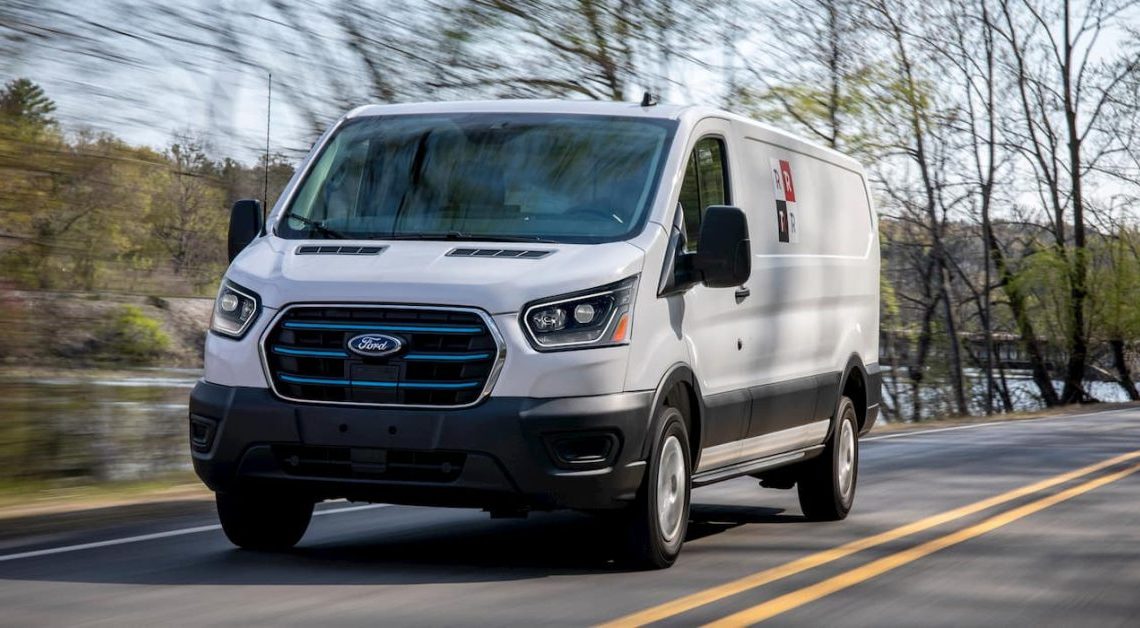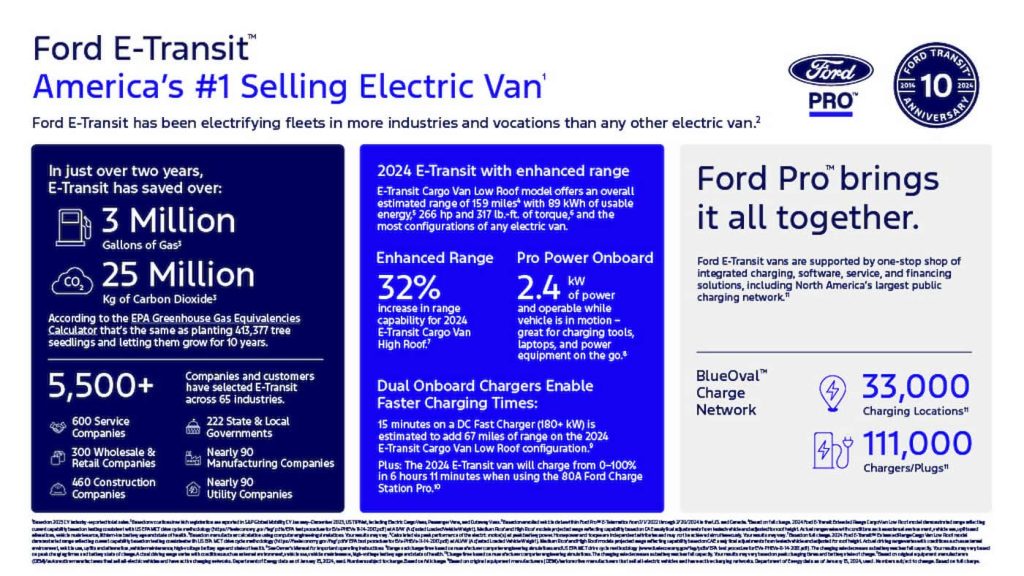
America’s best-selling electric van now has even more range and faster charging. Ford announced on Wednesday that it began shipping the new 2024 E-Transit with enhanced range to customers across North America.
Ford changed the game after introducing the E-Transit in 2020, the all-electric version of its best-selling van. After debuting in 2022, the E-Transit has held the top-selling EV van title ever since.
Despite new competition, like Rivian and GM releasing electric vans, E-Transit continues to lead the market. Ford’s electric van remained America’s best-selling electric van, with over 6,301 models sold in the first half of 2024, more than double compared to the year before.
With 3,401 units sold in Q2 2024, E-Transit had its best quarterly sales since its debut in 2022.
More importantly, Ford said three of every four E-Transit buyers this year are repeat customers, as businesses are looking for lower maintenance and fuel costs associated with EVs.
In March, Ford revealed the updated 2024 E-Transit, which includes a bigger battery with more range and faster charging.

Ford is now shipping the new 2024MY Ford E-Transit
With 89 kWh (up from 67 kWh) of usable energy, the enhanced-range battery provides up to 159 miles range, 32% more than the current model (108 miles). It can also fast charge (10% to 80%) in 28 minutes.

The added range and faster charging enable more uses, like refrigerated delivery, which can open up a massive new market for Ford.
Ford’s electric van is assembled at its Kansas City Assembly Plant in Missouri, while enhanced range battery is made at its Rawsonville Components Plant in Michigan.
Ford opened pre-orders for the 2024 model in April, which starts at $51,095, or $1,100 more than the previous model. However, it qualifies for the federal $7,500 tax credit, which cuts the price to $43,595.
Author: Peter Johnson
Source: Electrek



